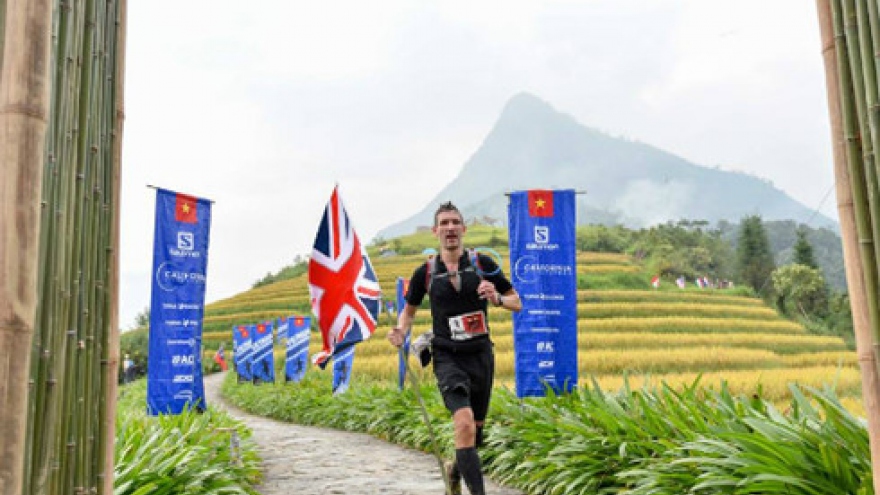Vietnam runs 100km Ultra Marathon
Paths once beaten solely by hill tribes and cattle get new use from urbanites eschewing treadmills and tracks.
 |
About 90 of those who checked-in on the morning of September 23 left that night to brave the new 100km ultra marathon, which Topas, the organizer, billed as “the hardest one-day race ever in Vietnam.”
Guided by headlamps alone, the racers set off toward a finish line; fewer than half would cross before 24-hours had passed.
Shorter races began in the wee hours of Saturday as runners decked out in spandex, bra-like backpacks, and sharp shoes rose to disappear up in the mountains, slide down muddy slopes and trudge through ethnic minority villages.
Some tumbled onto their bottoms, others gave up after finding themselves lost and exhausted. Nearly all who finished emerged scratched and bruised. And that’s exactly what these runners signed up (and paid) for.
Cao Ha, who tripped four times while sliding down the slopes during the race before emerging as the runner-up in the 100km ultra marathon described his simple strategy, thusly:
“Catch up when you’re behind, keep distance when you’re ahead,” he said. “That’s what racing’s all about.”
Ha explained most of the runners participate for the chance to take in the scenery, breathe fresh air and enjoy a new experience.
In addition to the required entrance fees, each participant donated $20 to charity.
Last year, VMM raised over $5,000. This year, the marathon took in about $24,000, half of which went to Project Smile, which funds surgeries for children in developing countries suffering from facial deformities.
Three years ago, less than 20 Vietnamese signed up for all distances.
This year, Vietnamese runners made up about 20 percent of the total turn-out.
“We were confident it would become more popular, but we did not foresee this huge rise in Vietnamese participation,“ said David Lloyd, the Director of Sport for the event’s organizer, Topas Travel.
In November, Topas will hold its first mountain bike marathon.
The first run in 2013 employed flags to mark the track, but quickly vanished. Locals had brought them home to use as scarecrows, sending gullible runners into open rice paddies. The following year, police walked the track and warned residents to leave the markers alone. This year, the way ahead was marked by spraypainted arrows.
All three winners of the 10km event belong to the H’Mong ethnic minority. The champion, a second-generation porter at Topas, succeeded in defending his position for the last two years.
The two runners-up are his cousins.



